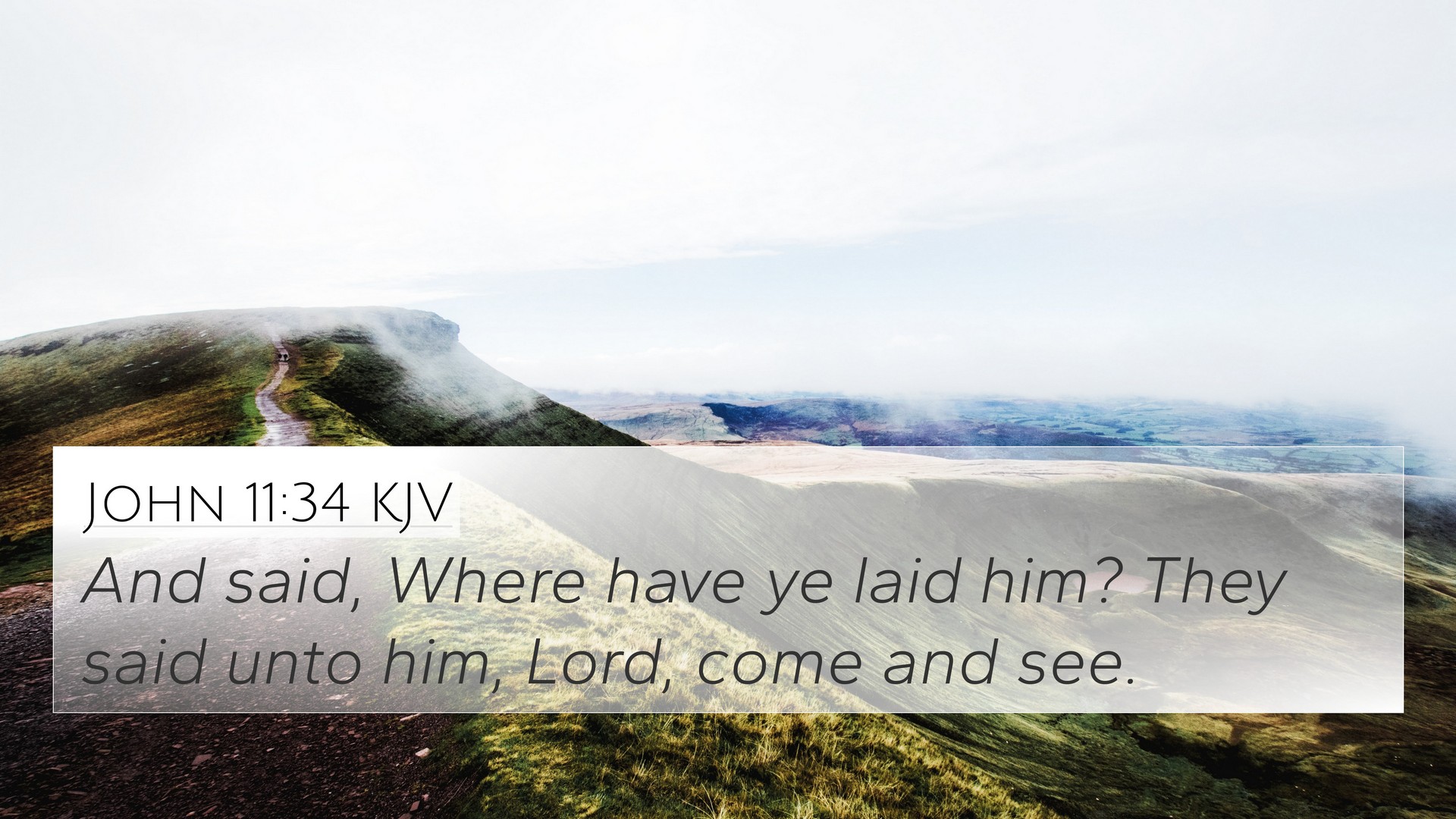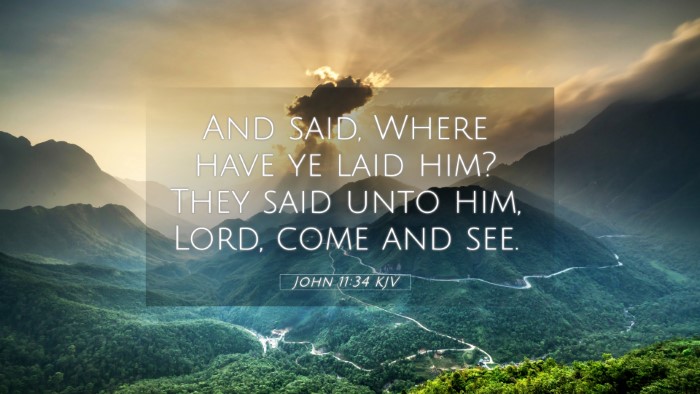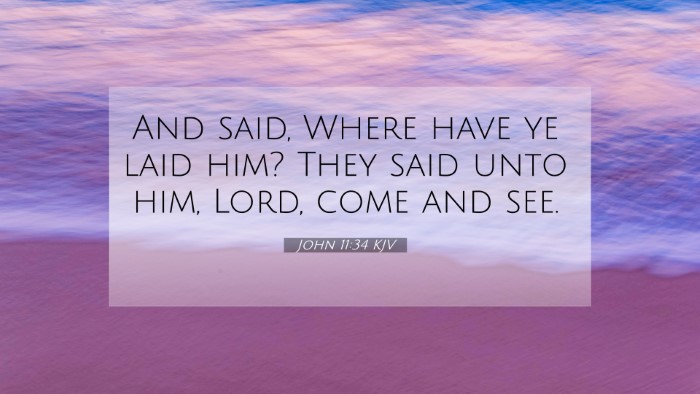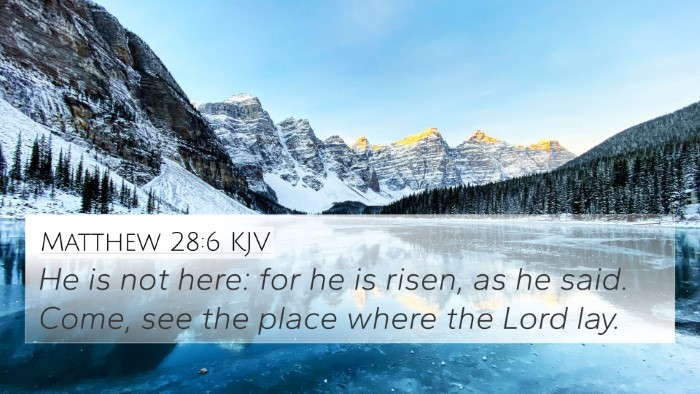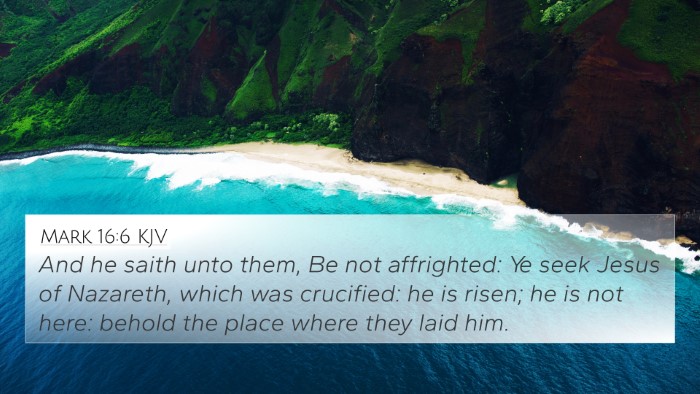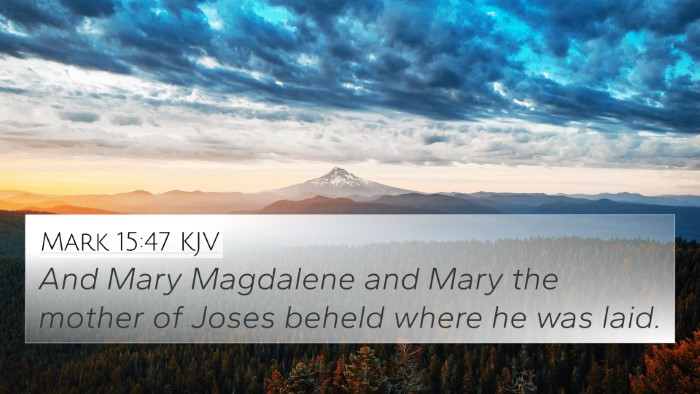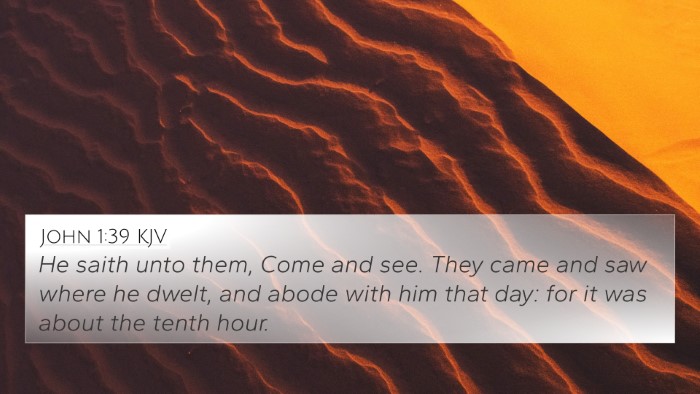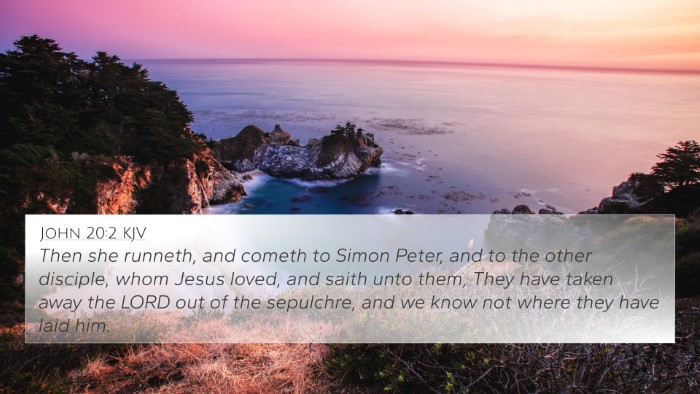Understanding John 11:34
In the book of John, chapter 11, verse 34, we find a profound moment in the narrative surrounding the death of Lazarus. This verse states: "And said, Where have ye laid him? They said unto him, Lord, come and see." This inquiry comes from Jesus as He approaches the tomb of His beloved friend. To unpack the depth of this statement, we can draw insights from several public domain commentaries.
Insights from Public Domain Commentaries
Matthew Henry points out that this question posed by Jesus illustrates His deep concern and compassion. It is not mere curiosity; rather, it reflects His desire to engage with the reality of human sorrow and death. Henry emphasizes the humanity of Jesus, suggesting that this moment exemplifies the Savior’s empathy towards those grieving the loss of Lazarus.
Albert Barnes expands on this idea, noting that Jesus’ inquiry signifies His readiness to confront death directly. Barnes highlights that Jesus' asking “Where have ye laid him?” prefaces the miraculous event of raising Lazarus from the dead, indicating Jesus' command over life and death. This line of questioning represents both a literal and theological journey — from darkness (death) to light (resurrection).
Adam Clarke interprets this interaction as a pertinent lesson on faith and the mystery of God's plans. Clarke indicates that Jesus’ willingness to ask where Lazarus is laid serves both as an expression of His compassion and as an invitation for the mourners to show their trust in Him despite their grief. It demonstrates the importance of understanding sorrow while also holding onto faith in divine intervention.
Cross-References and Thematic Connections
This verse can be cross-referenced with the following biblical texts, showcasing how interconnected the Scriptures are:
- John 11:1-3: This passage provides context about Lazarus’ illness and serves as a foundation for Jesus' inquiry.
- John 11:25-26: Jesus declares Himself as the resurrection and the life, underlining the hope that follows His question.
- Luke 7:13: Here, Jesus shows compassion when encountering another funeral; this portrays His recurring empathy towards mourners.
- Matthew 5:4: This verse from the Beatitudes speaks to those who mourn, reinforcing the theme of comfort during grief.
- John 14:1: In this passage, Jesus comforts His disciples, which echoes the solace He provides to Martha and Mary through His presence.
- Romans 8:18: Paul discusses the present sufferings and future glory, aligning with the resurrection promise found in Jesus’ actions.
- 1 Thessalonians 4:13-14: This passage offers comfort regarding those who have died, linking to the hope embedded in Jesus' inquiry about Lazarus.
Thematic Bible Verse Connections
The inquiry “Where have ye laid him?” transcends a mere question; it embodies several key themes found throughout the Bible:
- Empathy: Jesus’ approach showcases how God relates to human suffering.
- Resurrection: This account points to the hope of life after death, central to Christian belief.
- Faith in Adversity: This moment challenges believers to trust in divine outcomes even amidst despair.
- Community Mourning: Jesus' involvement in the mourning process underscores the necessity of community in grieving.
Comparative Bible Verse Analysis
Cross-referencing Biblical texts can illuminate these themes. For instance, comparing John 11:34 with John 11:40 reveals how the observation of the tomb transforms into a moment of faith in God’s glory. Similarly, linking it to Matthew 11:28, where Jesus invites the weary to find rest, further correlates themes of solace in the face of grief.
Conclusion
John 11:34 ultimately captures a moment rich in meaning about Jesus’ human experience, His compassion, and the power He holds over life and death. Through the insights of respected commentators and the connections made through cross-referencing, readers can gain a deeper understanding of how this verse fits into the broader narrative of Scripture. The interplay between sorrow and hope embodied in this inquiry offers a profound insight into the very nature of the Christian faith.
